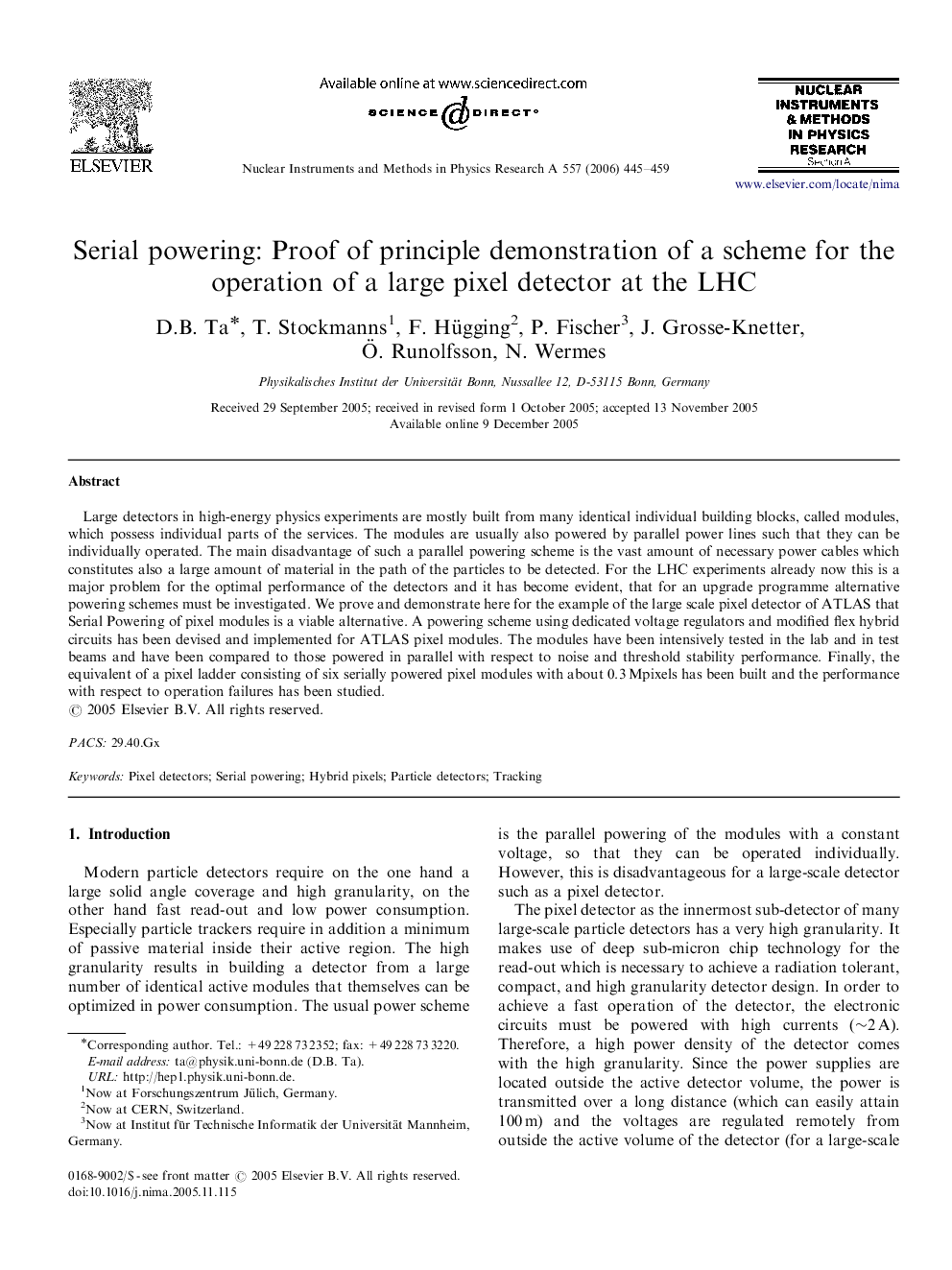| Article ID | Journal | Published Year | Pages | File Type |
|---|---|---|---|---|
| 1833552 | Nuclear Instruments and Methods in Physics Research Section A: Accelerators, Spectrometers, Detectors and Associated Equipment | 2006 | 15 Pages |
Large detectors in high-energy physics experiments are mostly built from many identical individual building blocks, called modules, which possess individual parts of the services. The modules are usually also powered by parallel power lines such that they can be individually operated. The main disadvantage of such a parallel powering scheme is the vast amount of necessary power cables which constitutes also a large amount of material in the path of the particles to be detected. For the LHC experiments already now this is a major problem for the optimal performance of the detectors and it has become evident, that for an upgrade programme alternative powering schemes must be investigated. We prove and demonstrate here for the example of the large scale pixel detector of ATLAS that Serial Powering of pixel modules is a viable alternative. A powering scheme using dedicated voltage regulators and modified flex hybrid circuits has been devised and implemented for ATLAS pixel modules. The modules have been intensively tested in the lab and in test beams and have been compared to those powered in parallel with respect to noise and threshold stability performance. Finally, the equivalent of a pixel ladder consisting of six serially powered pixel modules with about 0.3 Mpixels has been built and the performance with respect to operation failures has been studied.
